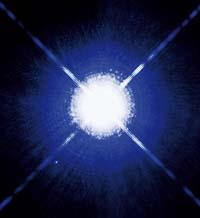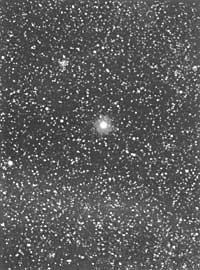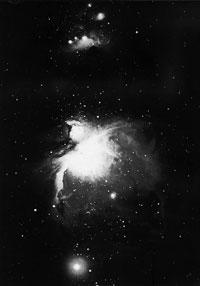Sirius, a colorful story
2010/07/01 Roa Zubia, Guillermo - Elhuyar Zientzia Iturria: Elhuyar aldizkaria

It is usually not difficult to say what color a star is. It is seen at first glance that the Sun is yellow (the light emitting is yellow) and, for example, Betelgeuse, the largest star in the constellation of Orion, is reddish. However, the brightest star in the night sky generates great uncertainties. It is located in the constellation of Canis and is called Sirius. And for thousands of years the color of Sirius has provoked disagreement. It is a paradox, being the brightest star. Astronomers often speak of the mystery of Sirius.
For the Chinese it is a white star. Moreover, Sirius was an example of whiteness. For the writer Seneca, instead, Sirius was red. Some say that as Seneca was a poet he did not want to be exact and that his testimony is worthless. But it was also red for Ptolemy, a very reliable astronomer. To make the question more confusing, the testimonies of some spoke of other colors. The Roman poet Marcus Manilius, a contemporary of Seneca, wrote that Sirius had the blue color of the sea.
What was going on? Who didn't see it correctly? The truth is that we cannot accept the view that all who wrote about Sirius in Roman times saw the star "evil". It is more logical to think that Sirius has changed color over time. However, not all the details of this supposed color change are clear. Modern astronomy has some answers, but not all.
White and bluish
Sirius is, at least today, white, and well analyzed the blue tone is appreciated. Of course, astronomers do not use this language and do not visually analyze colors. They measure the wavelength of the emitted light and include it in a classification according to spectral types.
This classification uses letters to express colors. The reason is that it originates in the hydrogen spectrum, which was expressed with a letter each band of colors. The classification of stars has inherited this system and, depending on the color, are framed on the following scale: OBAFGKM. Stars O are blue and M red. Among them, all colors have room. To remember the letters of this scale are used nemotechnic systems, the best known is a phrase in English: Oh, Be A Fine Girl, Kiss Me. And for a more accurate scale of eight letters, astronomers use a subscale within each type.
Being white Syrian, A1 is spectral. And that gives us information on the temperature of the star. The color is synonymous with temperature, as in a piece of iron that is put to the fire. At first the iron does not shine, but as it heats up it turns red and then white and can be spun up to blue. The same in the stars. Being a white Syrian, it is a very hot star, with an area of 10,000 degrees (these degrees are kelvin, but the number that is obtained passing to the degrees centigrade is also about 10,000).
We all know this thanks to the measurements made by modern astronomers, who somehow agree with the ancient Chinese. But they do not explain why they saw a Syrian of another color towards the 1st century of our era.
Much later, the XIX. In the twentieth century the concepts begin to be clarified: German Fridrich Bessel discovered that Sirius was not a star. It is a two-star system: Sirius A and Sirius B (some say there may be a third star, but it has not been shown).
Next to the giant Sirius A is the small Sirius B. The diameter of the large is 1.8 times that of the Sun, while the diameter of the small is somewhat smaller than that of the Earth. The difference is great, but its size is not so much in mass, since the small star is very dense: A cubic centimeter of material from the star Sirius B, a small given of one centimeter on its side, weighs 2,200 kilos. Sirius B is white, a white dwarf (A2 color at scale of spectral types).
This data apparently does not solve the mystery of color, but it must be borne in mind that in the process of creating white dwarfs there may be a giant Sirius B
be red for a while. Thus, the whole two-star system would look red.
If Sirius B was a large mass star in its origin, as it merged all the hydrogen from the core would be compressed, the fusion would be practically immobile, but the pressure would have set in motion the fusion of the outer hydrogen of the star. It was a second melting period, at very high temperature, that would open the star. This expansion would cool the star and brown it. It was a red giant. At the end of this violent phase of the red giant, there is usually a white dwarf, as we see today in the star Sirius B.
This would explain the fact of having seen in his day the red Sirius B, but with the doubt that in the white dwarfs so created, the red giant phase is very fast from the point of view of the parameters of the life of the stars. But that speed can be hundreds of millions of years. And if the Chinese of old saw you Sirius and us too, then the face of the star was only millenary. Perhaps too fast, modern astronomy does not have enough data to confirm or give them a negative light. Therefore, the color of the Sirius star system remains a mystery.

Gai honi buruzko eduki gehiago
Elhuyarrek garatutako teknologia






